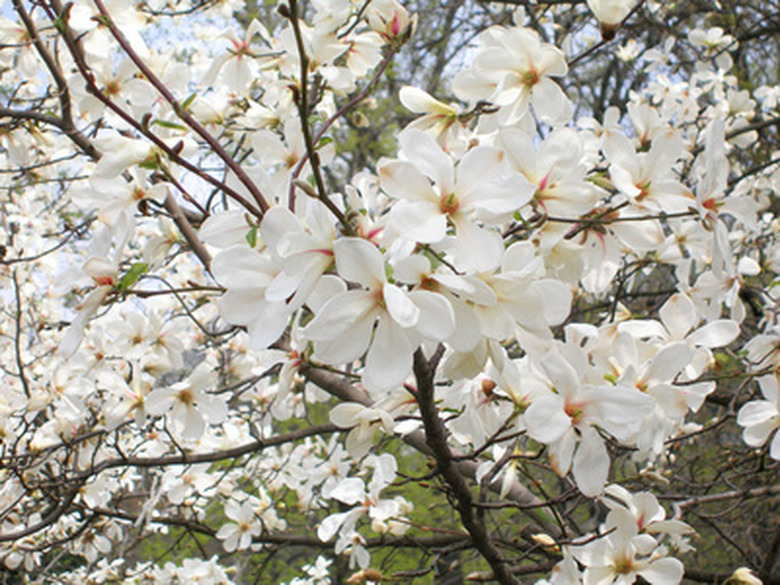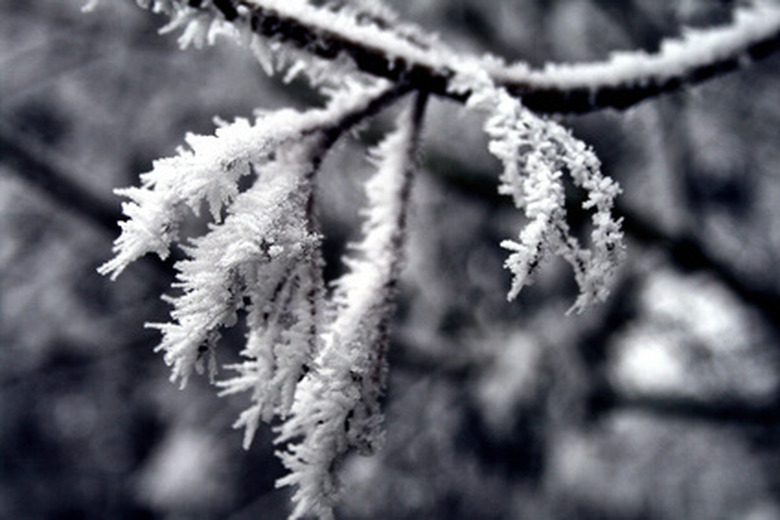Problems With Magnolia Trees
The seeds from the large fragrant flowers of the magnolia attract migrating birds, as well as songbirds, to this ornamental tree. There are approximately 80 species of magnolia, with a height range spanning from 15 to 80 feet at maturity, according to the United States National Arboretum. Not only is the magnolia an attractive ornamental, but it is easy to grow, and there are many evergreen varieties.
The magnolia may sound perfect but it is not free of problems. Learning about its disadvantages will help you make an informed decision on whether to decorate your lawn with this ornamental tree.
Thin Bark
The thin bark of the young magnolia tree is easily damaged by lawn equipment such as mowers and weed trimmers. Yardener.com recommends placing 2 to 4 inches of mulch around the tree.
- The seeds from the large fragrant flowers of the magnolia attract migrating birds, as well as songbirds, to this ornamental tree.
- Not only is the magnolia an attractive ornamental, but it is easy to grow, and there are many evergreen varieties.
Another option is to plant a ground cover that extends at least 2 feet out from the tree for protection.
Weather Conditions
Some varieties of magnolia have large leaves that are easily damaged by high winds. Although this damage will not affect the health of the tree, it does impact its ornamental value. Plant your magnolia tree in a sheltered area to protect it from wind damage.
Early blooming magnolia varieties can become damaged by early frost causing blackening of the leaves. The damage does not affect the overall well-being of the tree or the capacity for future bud formation.
Magnolia Scale (Neolecanium cornuparvum)
Magnolia scale is a large insect that attacks the trunk, branches and twigs of the magnolia tree. The tan, smooth and shiny insects may reach a diameter of 1/2 inch when fully grown. A heavy infestation of scale will encrust the tree and can be fatal. As the insect sucks the sap from the tree, it excretes honeydew which drips down onto leaves and branches and can result in a fungus called black sooty mold. This excreted honeydew also attracts ants, bees, wasps and other insects.
- Another option is to plant a ground cover that extends at least 2 feet out from the tree for protection.
- Early blooming magnolia varieties can become damaged by early frost causing blackening of the leaves.
To arrest the insect infestation and reduce scale population, use summer (horticultural oil), dormant oil or a standard chemical control, reports Treehelp.com. A few insecticides used for magnolia scale are acephate, azadiractin, carbaryl, cyfluthrin, malathion and permethrin.
Spider Mites
Seeing webs on your magnolia tree is an indication that the tree may be infested with spider mites. These tiny mites are barely visible and vary in color. Check the top side of lower leaves for yellow or red spots and webbing. This is another indication of spider mite infestation.
Synthetic insecticides of the pyrethroid class and natural insecticides such as neem oil or insecticidal soaps are effective against spider mites.
- To arrest the insect infestation and reduce scale population, use summer (horticultural oil), dormant oil or a standard chemical control, reports Treehelp.com.
- Synthetic insecticides of the pyrethroid class and natural insecticides such as neem oil or insecticidal soaps are effective against spider mites.

